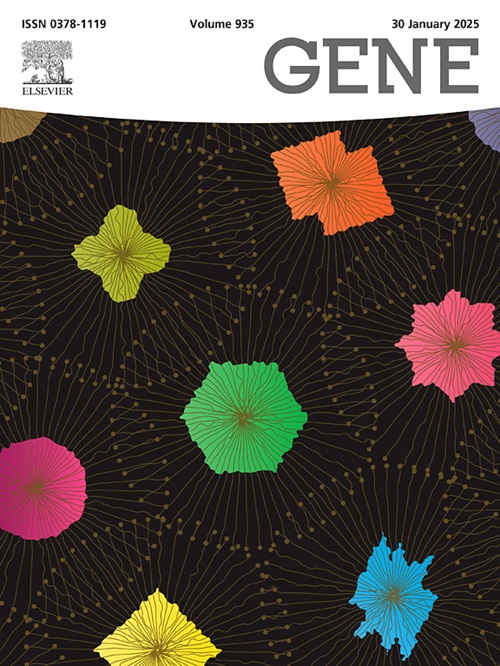Human-genetic variants associated with susceptibility to SARS-CoV-2 infection
IF 2.6
3区 生物学
Q2 GENETICS & HEREDITY
引用次数: 0
Abstract
SARS-CoV-2, the third major coronavirus of the 21st century, causing COVID-19 disease, profoundly impacts public health and workforces worldwide. Identifying individuals at heightened risk of SARS-CoV-2 infection is crucial for targeted interventions and preparedness. This study investigated 35 SNVs within viral infection-associated genes in SARS-CoV-2 patients and uninfected controls from the Basque Country (March 2020–July 2021). Its primary aim was to uncover genetic markers indicative of SARS-CoV-2 susceptibility and explore genetic predispositions to infection. Association analyses revealed previously unreported associations between SNVs and susceptibility. Haplotype analyses uncovered novel links between haplotypes and susceptibility, surpassing individual SNV associations. Descriptive modelling identified key susceptibility factors, with rs11246068-CC (IFITM3), rs5742933-GG (ORMDL1), rs35337543-CG (IFIH1), and GGGCT (rs2070788, rs2298659, rs17854725, rs12329760, rs3787950) variation in TMPRSS2 emerging as main infection-susceptibility indicators for a COVID-19 pandemic situation. These findings underscore the importance of integrated SNV and haplotype analyses in delineating susceptibility to SARS-CoV-2 and informing proactive prevention strategies. The genetic markers profiled in this study offer valuable insights for future pandemic preparedness.
与SARS-CoV-2感染易感性相关的人类遗传变异
SARS-CoV-2是21世纪第三种主要的冠状病毒,导致COVID-19疾病,对全球公共卫生和劳动力产生深远影响。识别感染SARS-CoV-2风险较高的个体对于有针对性的干预和防范至关重要。本研究调查了巴斯克地区(2020年3月- 2021年7月)SARS-CoV-2患者和未感染对照中病毒感染相关基因内的35个snv。其主要目的是发现指示SARS-CoV-2易感性的遗传标记,并探索感染的遗传易感性。关联分析揭示了先前未报道的snv与易感性之间的关联。单倍型分析揭示了单倍型与易感性之间的新联系,超越了个体SNV的关联。描述性建模确定了关键易感因素,其中TMPRSS2基因rs11246068-CC (IFITM3)、rss5742933 - gg (ORMDL1)、rs35337543-CG (IFIH1)和GGGCT (rs2070788、rs2298659、rs17854725、rs12329760、rs3787950)变异成为COVID-19大流行情况的主要感染易感指标。这些发现强调了综合SNV和单倍型分析在描述SARS-CoV-2易感性和为主动预防策略提供信息方面的重要性。本研究中描述的遗传标记为未来的大流行防范提供了有价值的见解。
本文章由计算机程序翻译,如有差异,请以英文原文为准。
求助全文
约1分钟内获得全文
求助全文
来源期刊

Gene
生物-遗传学
CiteScore
6.10
自引率
2.90%
发文量
718
审稿时长
42 days
期刊介绍:
Gene publishes papers that focus on the regulation, expression, function and evolution of genes in all biological contexts, including all prokaryotic and eukaryotic organisms, as well as viruses.
 求助内容:
求助内容: 应助结果提醒方式:
应助结果提醒方式:


